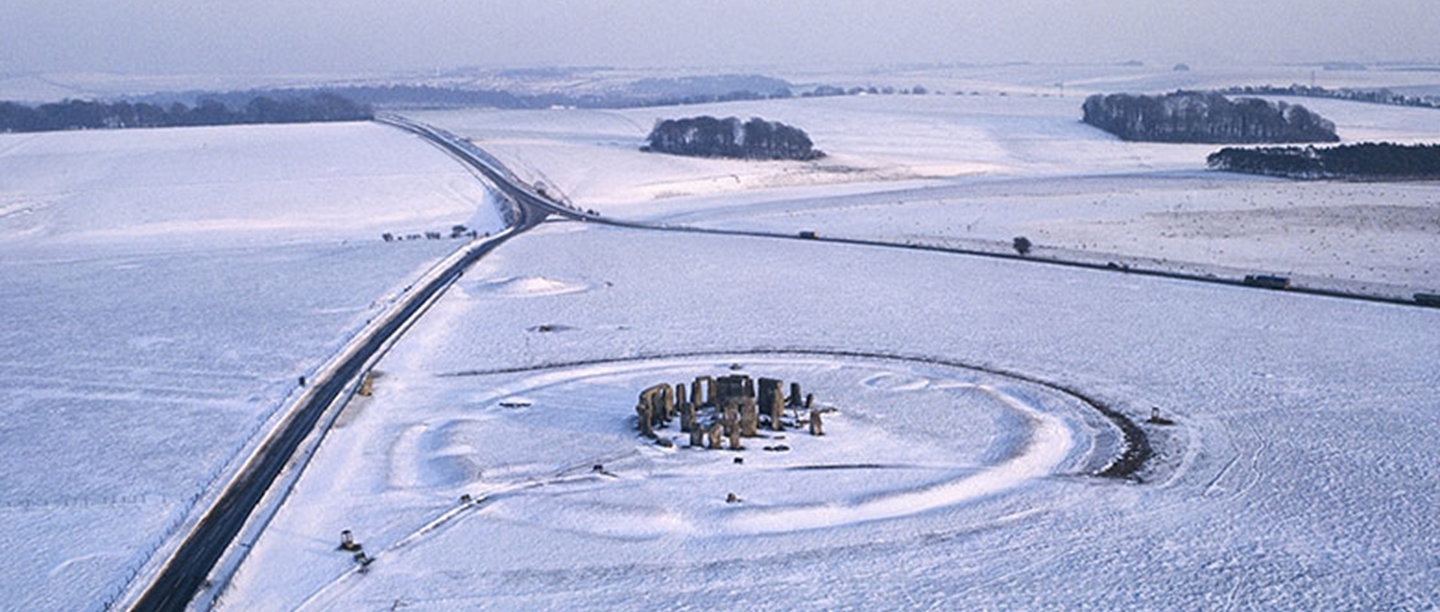
In this blog post, part of our series charting 100 years of care and conservation of Stonehenge since 1918, archaeologist Julian Richards looks at the decade from 1986. It was a time that saw Stonehenge, together with Avebury, become a World Heritage Site, in recognition not only of the outstanding prehistoric remains themselves but the richness of their surrounding landscapes.
The Stonehenge Environs Project
In 1978 the publication of Stonehenge and Its Environs by the Royal Commission on the Historical Monuments of England had re-emphasised the richness of the archaeological landscape around Stonehenge. However, it also showed how much had been damaged by cultivation. This provided the springboard for the Stonehenge Environs Project, run by Wessex Archaeology and which I managed.
From the start, the aim of the project was to assess the degree of agricultural damage to the Stonehenge landscape and to develop ways to prevent it.
1980 saw the first excavation – a sample of Coneybury Henge (to the south-east of Stonehenge), which incidentally discovered the Coneybury ‘Anomaly’, a hugely important early Neolithic pit crammed with feasting debris, just outside the henge entrance. That winter also saw the first of four seasons of fieldwalking – the systematic collection of surface finds. This recovered mainly worked flint from the Neolithic and early Bronze Ages. Areas of activity were then further investigated using geophysical and geochemical survey and, in some cases, sample excavation.
As well as achieving its main objectives, the project also succeeded in establishing a prehistoric environmental sequence for the area. This was done by using land snail data from a range of excavations. Snail remains, which survive well in the chalky soils around Stonehenge, are important indicators of past landscapes, because different species favour different environments. The results from the whole project were analysed and published in 1990.
A World Heritage Site
It was in the middle of this decade of investigation and analysis that a significant event took place. In 1986 the prehistoric landscapes of Avebury and Stonehenge were inscribed by UNESCO as a World Heritage Site (WHS) in recognition of their international importance.
The Stonehenge WHS currently covers an area of 2,600 hectares (6,500 acres). Since 1986, it has seen many improvements in management by both the National Trust and private landowners, with areas returned to grassland, and access and interpretation improved.
Some changes were quite radical. The felling of a section of Fargo Wood, for example, where it was crossed by the Stonehenge Cursus, not only improved the management of this enigmatic Neolithic monument but also allowed its width and extent to be appreciated.
Room for improvement
But alongside all these welcome improvements, there were still some outstanding problems to deal with. It had been clear for some time that the visitor facilities at Stonehenge were simply not coping with the increasing numbers of visitors. Inadequate toilets, no space for interpretation and a tiny outdoor seating area for the ‘café’ – a concrete counter – led the parliamentary Public Accounts Committee to label the facilities ‘a national disgrace’ in 1993. The search for a solution started, although it would not be resolved until the end of 2013, when the new visitor centre opened.
Another disgrace was that most of the extensive excavations that had been carried out at Stonehenge during the 20th century had never been published. This had left many uncertainties about its dating and sequence of construction.
Fortunately, Wessex Archaeology were engaged to analyse all the available information and finds. Their definitive report, published in 1995 as Stonehenge in Its Landscape: Twentieth-century Excavations, allowed a new understanding of this most important monument, while revealing inevitable gaps in our knowledge.
Road schemes
The roads close to Stonehenge remained a problem, however – both the A344, which ran only metres from the Heel Stone, and the A303, the major route to south-west England that lies just south of Stonehenge. In the 1960s road improvements had stopped short just to the east of Stonehenge where, as the stones come into view, two lanes in each direction become one.
At that time there would probably have been little opposition to carrying on widening the A303 past Stonehenge. But by 1995, when the first mini public inquiry on road improvement was held, the situation had changed. This was now a World Heritage Site and the potential impact of a surface dual carriageway on the archaeological landscape was clear.
Three years later the idea of a tunnel was announced. It was welcomed by all the major archaeological bodies, including English Heritage and the National Trust. Twenty years on, a tunnel has still not been built, and consultations continue on a scheme proposed by Highways England.
Looking back on this period now, the early years of the Stonehenge Environs Project were a time of excitement and discovery, and also of freedom, when camping within sight of the stones (with permission) was a genuine privilege. This was also a time when the landscape that we can see and enjoy today started to evolve – when inaccessible ploughed fields were replaced by welcoming grassland, greater access and greater understanding.
At the end of the 20th century, as a World Heritage Site, Stonehenge was ready to welcome visitors from all over the world.
- Plan your visit to Stonehenge
- Find out more about the history of Stonehenge


